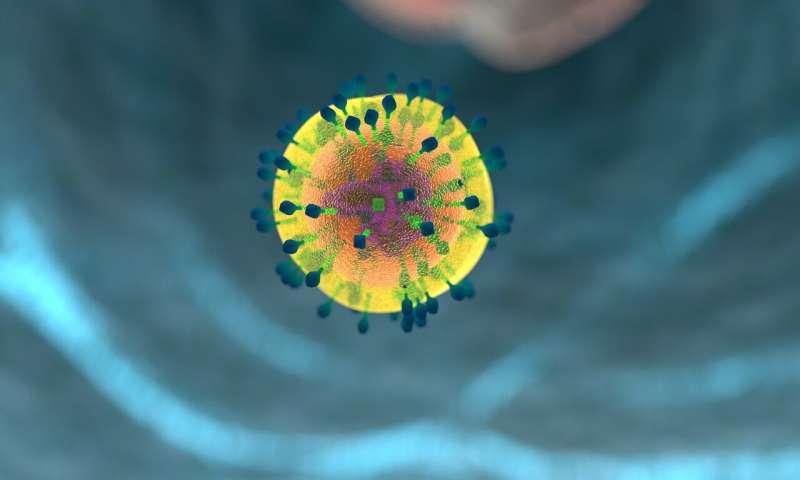Suzanne Judd, Ph.D., an epidemiologist at UAB, explains what will lead to herd immunity and why it is important to remain vigilant in reducing the spread of COVID-19. Credit: CC0 Public Domain
Houston Methodist researchers have developed a mathematical model to predict how specific cancers will respond to immunotherapy treatments, thus enhancing chances for successful treatments from a wide variety of cancer-immunotherapy drug combinations. The results were published last month in Nature Biomedical Engineering in collaboration with researchers at MD Anderson Cancer Center.
Immunotherapy activates patients' immune systems to recognize and attack their cancers, leading to higher, more targeted kill rates and fewer side effects than chemotherapy, radiation and other therapies. While this technology is a significant advance in fighting cancer, it works only with some cancer types, and only in a subset of patients with these cancers.
The mathematical model uses a system of mathematical equations based on laws of physics and chemistry to describe the complex biological systems involved in immunotherapy treatment and the associated immune response. Often, the important players or processes involved in cancer therapy (for example, immune cells or drugs that penetrate into the tumor) cannot be measured in patients. Mathematical modeling overcomes this limitation by discovering ways these can be calculated from other quantities that can be measured. Houston Methodist's Dr. Zhihui Wang and Dr. Vittorio Cristini and colleagues have designed this model to predict the strength of immune response using only inputs that are already measured in cancer patients. The model establishes a framework for engineering individual treatment strategies in a step toward the future of personalized medicine.
To test their model's ability to accurately and reliably characterize the specific strength of a cancer type to a specific immunotherapy treatment, they obtained CT or MRI scan data of tumors from before, during and after immunotherapy in 124 patients treated with checkpoint inhibitor immunotherapy in one of four in-house clinical trials. These were then analyzed using the model to obtain specific numeric measures of the therapeutic response. They found that two model-derived measures that quantify (1) the presence and health of the immune presence within the tumor and (2) the resulting kill rate of cancer cells by immunotherapy-activated immune cells were able to be combined into a single measure that was highly correlated with long-term tumor burden, thus providing a unique numerical score of the strength of response of that cancer to the specific drug. These results were further validated with data from 177 additional patients treated with one of the most common checkpoint inhibitor immunotherapies (anti-CTLA4 or anti-PD1/PDL1 monotherapies).
The mathematical model can be immediately implemented in the clinic, without the need for new technology, personnel or extensive training. Furthermore, methods to use other clinical measures to improve the accuracy and precision of model-based predictions, such as data from blood samples or tumor biopsies, are currently under investigation.
This collaborative effort between researchers and clinicians at Houston Methodist and MD Anderson Cancer Center is ongoing, with the long-term goal of clinical translation of this predictive model. MD Anderson collaborators include: Dr. James Welsh; Dr. Eugene J. Koay; Dr. Caroline Chung; and Dr. David S. Hong.
More information: Joseph D. Butner et al, A mathematical model for the quantification of a patient's sensitivity to checkpoint inhibitors and long-term tumour burden, Nature Biomedical Engineering (2021). DOI: 10.1038/s41551-020-00662-0
Journal information: Nature Biomedical Engineering
Provided by Houston Methodist
























